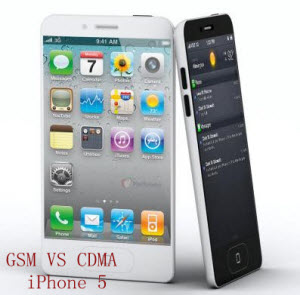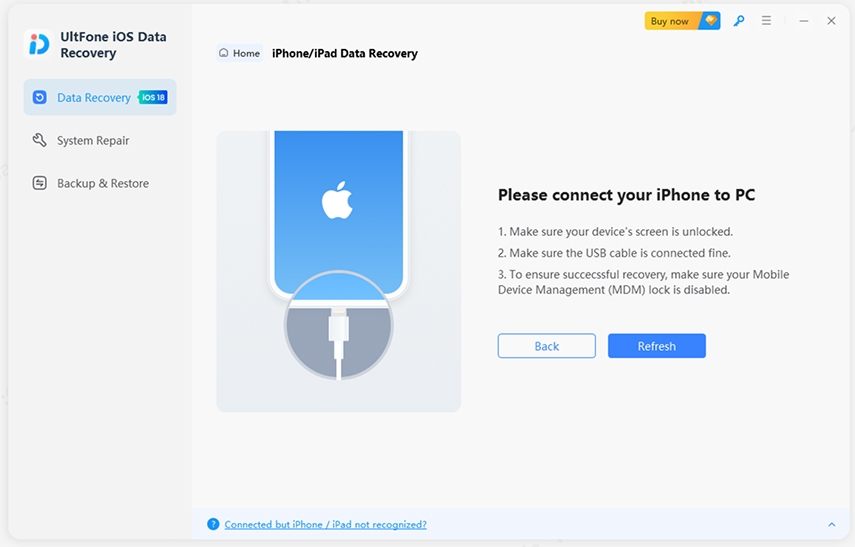Identifying iPhone 5 GSM and iPhone 5 CDMA
 Jerry Cook
Jerry Cook- Updated on 2019-07-25 to iPhone
Lots of people often ask, "What are the differences between iPhone 5 GSM and iPhone 5 CDMA? Which one should I buy?" Or you may hear some confusing words, "Is my iPhone an iPhone 5 GSM or CDMA?" What are All the Differences Between the iPhone 5 GSM and the iPhone 5 CDMA? In order to give a satisfying answer, let's take a look at iPhone 5 GSM and iPhone 5 CDMA from the following aspects.

5 Distinct models
Actually, iPhone 5 has 5 distinct models all together, that is:
- 1. iPhone 5 (GSM/LTE 4, 17/North America), discontinued;
- 2. iPhone 5 (CDMA/LTE, Sprint/Verizon/KDDI);
- 3. iPhone 5 (GSM/LTE 1, 3, 5/International);
- 4. iPhone 5 (CDMA China/UIM/WAPI);
- 5. iPhone 5 (GSM/LTE/AWS/North America).
Identification differences
One simple way to identify iPhone 5 GSM or CDMA is by iPhone models printed on the back of the phone. The five models share three modes—A1428, A1429, A1442.
A1428 is shared by the original, but now discontinued iPhone 5 (GSM/LTE 4, 17/North America) and iPhone 5 (GSM/LTE/AWS/North America).
A1429 is shared by iPhone 5 (CDMA/LTE, Sprint/Verizon/KDDI) and the iPhone 5 (GSM/LTE 1, 3, 5/International).
The China-only iPhone 5 (CDMA China/UIM/WAPI) has a distinct A1442 model number.
External similarity and differences
All the iPhone 5 GSM or CDMA have a largely aluminum body -- a mere 0.30 of an inch (7.6 mm) thick. There are two colors: black & Slate and white& Silver (See the pictures below).
They also have dual cameras -- a rear 8 megapixels, 1080p "iSight" camera, which includes support for HD video recording and Panorama shots up to 28 megapixels, as well as a front 1.2 megapixel, 720p "FaceTime HD" camera.
Each iPhone 5, no matter GSM or CDMA model, has a bottom mounted headphone jack, and a new, smaller USB 2.0-based "Lightning" port to connect the iPhone 5 to a computer or a power adapter (an adapter is needed to connect the iPhone 5 to accessories that use the older "Dock Connector" port), as well as built-in speakers and three noise canceling microphones.
All the GSM and CDMA models have an access panel on the right side of the metal band for the enclosed tiny Nano SIM or "UIM" card for the China-only model.
Network Connectivity & Carrier Support Differences
Both iPhone 5 GSM and CDMA support 802.11n Wi-Fi, on both the 2.4 GHz and 5 GHz frequencies.
The current iPhone 5 (GSM/LTE/AWS/North America) supports LTE bands 4 and 17, as well as UMTS/HSPA+/DC-HSDPA (850, 900, 1900, 2100 MHz). It also adds AWS (1700/2100 MHz) support for T-Mobile and other carriers that support the AWS standard.
The iPhone 5 (GSM/LTE 1, 3, 5/International), supports LTE bands 1, 3, and 5, in addition to UMTS/HSPA+/DC-HSDPA (850, 900, 1900, 2100 MHz), and GSM/EDGE (850, 900, 1800, 1900 MHz).
The iPhone 5 (CDMA/LTE, Sprint/Verizon/KDDI), supports LTE bands 1, 3, 5, 13, and 25, as well as CDMA EV-DO Rev. A and Rev. B (800, 1900, 2100 MHz), UMTS/HSPA+/DC-HSDPA (850, 900, 1900, 2100 MHz), and GSM/EDGE (850, 900, 1800, 1900 MHz).
The China-only iPhone 5 (CDMA China/UIM/WAPI)supports CDMA EV-DO Rev. A and Rev. B (800, 1900 MHz), UMTS/HSPA+/DC-HSDPA (850, 900, 1900, 2100 MHz), and GSM/EDGE (850, 900, 1800, 1900 MHz).
Make Your Choice
With all the differences above, you must have a choice which iPhone 5 to buy. No matter which one you buy, if you encounter any data loss, you can turn to iPhone data recovery, which can easily help you recover any lost data after jailbreak, iOS upgrade, factory setting restore.

